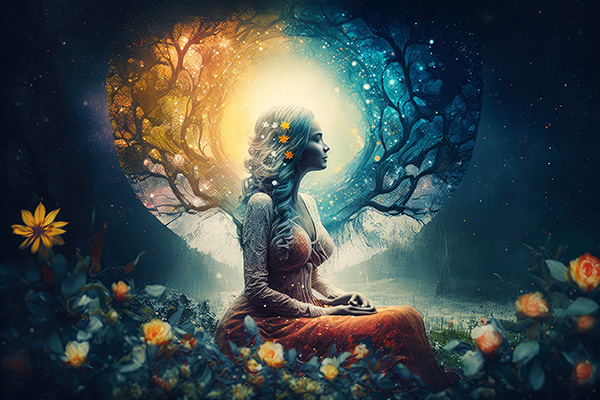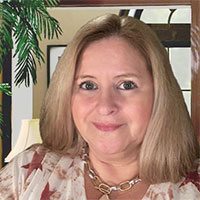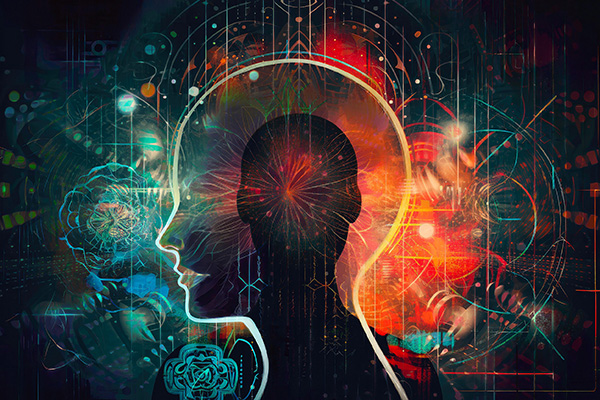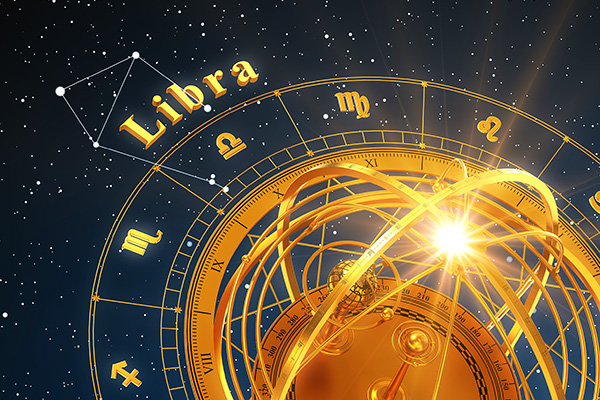How to Nurture a Flourishing Garden of the Mind
 Your brain resembles a lush garden, constantly growing and fostering the seeds of ideas you plant each day. Every moment you are awake, your thoughts, beliefs, and perceptions take root and slowly develop into the mental landscape that eventually influences your reality.
Your brain resembles a lush garden, constantly growing and fostering the seeds of ideas you plant each day. Every moment you are awake, your thoughts, beliefs, and perceptions take root and slowly develop into the mental landscape that eventually influences your reality.
If you were to stroll through your “mental garden,” what might you discover? Would you notice strong, flourishing trees of faith, optimism, and positive energy, their roots deeply nurturing the soil of your thoughts? Perhaps you would see bright, lively flowers of happiness, abundance, and well-being illuminating the scene? Or might you come across brittle limbs of shattered dreams and dry, decayed remnants of unfulfilled aspirations? Perhaps the encroaching weeds of negativity and uncertainty choking your true potential, casting shadows upon your hopes and ideals?
I often engage in this visual exercise as part of my morning meditation. I envision wandering through my internal garden, caring for my thoughts and beliefs, nourishing them with faith and positivity, bolstering those that are thriving, and uprooting the weeds of doubt, fear, or negativity that have somehow taken hold and no longer benefit my highest purpose.
I also seek divine guidance, reaching out to God, my spirit guides, and loved ones who have passed on for assistance in recognizing inherent talents and growth opportunities that may have slipped by unnoticed. There might be undiscovered seeds within me that still require planting or nurturing. With intention, I visualize the act of sowing new seeds of goodwill, self-empowerment, and spiritual growth.
Our mental garden serves as the foundation from which we express ourselves in the world. It is through our minds that we perceive reality, create new possibilities, and contribute to the shared consciousness. The thoughts we choose to cultivate and nurture directly influence our experiences and the effects we have on those around us. If we neglect our mental landscape, we risk allowing the weeds of negativity, self-doubt, and limitation to take root and suppress our potential.
Just as one would carefully select the seeds planted in a physical garden, we should mindfully choose our thoughts with the same intention. Each thought, idea, and belief we harbor in our mind acts as a seed destined to grow into something. Are you cultivating seeds of abundance, gratitude, and empowerment, or are you nurturing seeds of fear, scarcity, and limitation?
The Influence of the Inner Landscape
If you’ve ever encountered someone who appears misaligned with their true self or disconnected from their spiritual essence, you may have observed it in their actions, their words, and even their eyes. This disconnection often stems from the mental seeds they nurture in their inner garden, akin to a tragic film of past wounds, fears, and unresolved karma looping endlessly in their minds. These toxic thoughts can become so embedded that over time, they overshadow most of their daily experiences, preventing them from truly living in the present moment.
You can glean much about an individual’s mindset and inner landscape from how they carry themselves – whether their outlook is half full or half empty. Naturally, we all experience moments of sadness, loss, or hardship. Life is not always straightforward, and we may not always feel satisfied with our circumstances. However, by maintaining a sense of balance and perspective, we can ensure that our mental garden remains lively, vibrant, and full of growth.
The key is to recognize when negative thoughts begin to take root in your mind and to proactively act to uproot them. One of the most effective tools for achieving this is forgiveness. When we cling to past wounds, we nourish them, allowing them to fester and grow. But when we opt to forgive, we not only release ourselves from the burden of the past, we also create room for healthier, more empowering thoughts to flourish in our minds.
The Connection Between Mind and Body
<pCaring for our mental garden is not merely an act of spiritual or emotional hygiene – it is also essential for our physical health. The mind and body are intricately linked, and the thoughts we entertain can significantly influence our physical well-being. Studies indicate that a positive mindset and healthy mental state can enhance immune function, alleviate stress, and even accelerate healing. Conversely, mental stress, negative thought patterns, and unresolved emotional issues can manifest as physical ailments and lead to discomfort in the body.
For instance, a study conducted by Johns Hopkins University discovered that individuals with a positive outlook were 13% less likely to suffer a heart attack or another coronary event. This suggests that positivity may offer a safeguard against stress-induced inflammatory damage, supporting heart health and resilience in challenging times.
Similarly, the Mayo Clinic highlights that optimistic individuals manage stress in a more constructive manner, potentially lowering their risk for conditions such as heart disease. Positive thinking has been shown to enhance immune function, boost mental resilience, and improve overall well-being, all of which contribute to better physical health outcomes.
Such findings underscore the significant influence of cultivating a positive mental state and reiterate the value of mental “gardening” activities, such as meditation and mindfulness, in fostering affirming thoughts and eliminating negativity for holistic health. A healthy mind fosters a healthy body. Just as we nurture our physical gardens with water, sunlight, and attention, our minds thrive when we feed them with positive thoughts, self-kindness, and conscious awareness. This holistic approach is crucial for a balanced existence.
How to Care for Your Mind Garden
Nurturing your mental garden involves cultivating thoughts and lifestyle habits that enrich your mental, emotional, and spiritual wellness, while also eliminating those that do not serve your well-being. Here are some effective techniques for tending to your mental garden:
Act ‘As If’: Embrace the vibrational state of already possessing what you desire. For instance, if you’re aiming to manifest abundance, think, act, and feel as though you already embody abundance and gratitude. This strategy aligns your frequency with your aspirations.
Affirmation practice: Formulate and repeat affirmations on a daily basis, such as “I am capable of reaching my goals” or “I welcome abundance and joy into my life.” Affirmations assist in reprogramming the subconscious mind towards positivity and success.
Set boundaries: Safeguard your mental space by declining activities or relationships that drain your energy. Clear boundaries help maintain emotional equilibrium and mitigate overwhelm.
Challenge negativity: When negative thoughts arise, question their validity. Aim to replace these negative thoughts with positive alternatives. For instance, instead of thinking, “I am not good enough,” consider thinking, “I am capable and have much to offer.”
Creative expression: Engaging in hobbies such as painting, writing, or gardening (in the literal sense!) can stimulate your mind, evoke joy, and provide an avenue for self-expression.
Daily meditation: Meditation aids in clearing the mind, fostering emotional balance, and encouraging positive thoughts. Visualization exercises, like envisioning your mind as a flourishing garden, can deepen this practice. Dedicate a few minutes each day to visualize your desired outcomes, imagining the sights, sounds, and sensations associated with achieving your goals. This mental rehearsal enhances your belief in your capacity to manifest them.
Daily prayer: Prayer acts as a direct line to divine support, offering clarity, inspiration, and guidance as you nurture positivity and intentional creation. Begin each day with a prayer to align with your highest good. An example could be, “Dear God, guide my thoughts today to reflect love, abundance, and joy. Assist me in planting seeds that fulfill my highest purpose and the greater good.” Prayer also provides a wonderful opportunity for clarity. A simple prayer might be: “Spirit, guide me on the best path forward. Help me eliminate thoughts and habits that no longer serve me, replacing them with wisdom and positivity.”
Emotional scale: Utilize the Abraham-Hicks Emotional Guidance Scale to gently ascend the vibrational spectrum. For instance, if you’re feeling doubt, aim for a slightly improved emotion, such as hope, instead of trying to make an abrupt leap to joy. This gradual method nurtures your mental state.
Gratitude practice: Concentrate on the aspects of life you love and appreciate in the present moment. Spend a few moments daily identifying everything you are grateful for about your current environment or life. This habit elevates your vibration and attracts more things to be grateful for.
Intention-setting: Before engaging in any task, establish an intention that aligns with your desires. For example, before a phone call, declare, “This conversation will unfold smoothly, and we will achieve clarity together.” This practice helps you intentionally create positive results throughout your day.
Mindful breathing: Practicing mindful breathing can instantly soothe the mind and redirect you to the present. This straightforward act also fosters a connection between your mental and physical states.
Mindset alerts: Set reminders on your phone to pause and evaluate your thoughts. Replace negative patterns with positive or empowering alternatives.
Outdoor recreation: Spending time in nature alleviates stress, boosts mood, and encourages mindfulness. Observing the natural world can reinvigorate and refresh your mental landscape.
Physical activity: Exercise releases endorphins, enhances mood, and sharpens cognitive function. Physical activity nourishes both body and mind, supporting overall wellness.
Positive engagement: Spend time with supportive, uplifting individuals who foster growth and positivity. Surrounding yourself with such influences helps maintain a fertile mental garden free from toxicity.
Positive self-talk: Replace negative internal dialogues with affirmations and encouraging statements. For example, swap “I can’t do this” with “This is an opportunity to learn and grow.” Positive self-talk bolsters resilience and stress management.
Practice forgiveness: Release past grievances by opting for forgiveness, which can eliminate emotional weeds from your mental garden. Forgiveness opens up mental space for growth and positivity.
Reframing Challenges: Train your mind to view obstacles as opportunities. For example, rather than perceiving a setback as a failure, see it as a chance for learning and growth.
Solutions focus: When confronted with a problem, shift your focus from the problem itself to discovering a solution. This approach can enhance your sense of empowerment and control over your situation. You might also consider brainstorming with a friend or family member for fresh ideas and insights.
Through these conscious spiritual and self-care practices, along with positive thinking strategies, you can cultivate a thriving mental space that fosters personal and spiritual development, inner peace, holistic health and well-being, as well as abundance and prosperity.
By tending to our mental garden daily with love, intention, and care, we can ensure continuous blossoming, growth, and thriving in all facets of our lives. It revolves around the mental seeds we choose to plant – and nurturing them into the vibrant, flourishing life we are destined to lead.
|
Moon Goddess is a third-generation empathic healer and seer. She began offering healing readings over 20 years ago. With an interest in and extensive study of all things metaphysical from a young age, she possesses a heightened sensitivity that allows her to perceive and feel events before they occur. Utilizing Tarot, alongside her Guides’ assistance, she supports numerous individuals worldwide. Following his passing, her grandfather fulfilled his promise by returning to bid farewell and granting her an extraordinary experience. Moon is aware that there truly is a Heaven, and it is magnificent! By sharing her experiences, she has aided many individuals who have lost someone or are experiencing grief. Get a reading with Moon Goddess now at PsychicAccess.com. |















